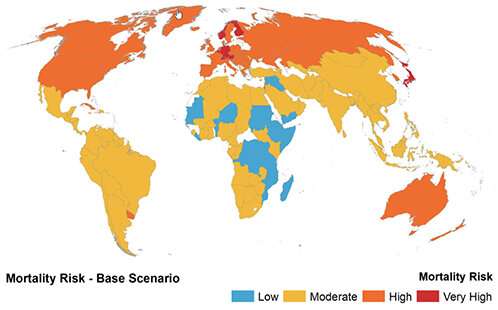Statistical analysis weighs the risks in the fight against COVID-19

Western Sydney University researchers have used advanced statistical analysis to better understand how countries are impacted by COVID-19.
A funded collaboration with United Arab Emirates University (UAEU) allowed researchers from the University's School of Computer, Data and Mathematical Sciences to access a range of global datasets—to determine which countries were well-equipped to fight a global pandemic.
A UAEU task force—comprised of experts in Data Science, Epidemiology, Viral Pathology/Infections and Econometrics—also collaborated on the project.
Dr. Omar Mubin, alongside Ph.D. students Mudassar Arsalan and Belal Alsinglawi, accessed global socio-economic and COVID-19 data from World Bank, NASA, Johns Hopkins University, and Environmental Systems Research Institute (ESRI).
Using the range of data-sets, the researchers assessed countries on the basis of:
- Population—including total size of population, and median age;
- Economy—including Gross Domestic Product (GDP) per capita, and current health expenditure;
- Health capacity—including the number of hospital beds, physicians and nurses available per 1000 people; and
- Density in urban areas.
COVID-19 data as of 13 May 2020 was also used as a means of assessing countries on the basis of their number of active cases; mortality rates; and the size of their 'susceptible population' not yet infected by COVID-19.
The results of the analysis, published in the International Journal of Environmental Research and Public Health, indicate that the countries with the highest mortality risk—due to their large ratio (and living patterns) of elderly population—include Japan, Norway, Germany, Switzerland, Austria, Belgium, Denmark, Sweden, Netherlands, and Finland.
"On 13 May 2020, most countries were at a similar or lower risk level than what would have been expected pre-COVID, with only 44 out of 153 countries experiencing a more than 20 percent increase in mortality risk," said Dr. Mubin.
"In this study, the strongest predictor of a country's mortality risk was its ratio of elderly people—which surpassed all other socio-economic and demographic indicators."
Dr. Mubin said the study shows the benefit of taking a multi-factor, weighted approach to determining a country's preparedness for future pandemics.
More information: Mudassar Arsalan et al. COVID-19 Global Risk: Expectation vs. Reality, International Journal of Environmental Research and Public Health (2020). DOI: 10.3390/ijerph17155592




















